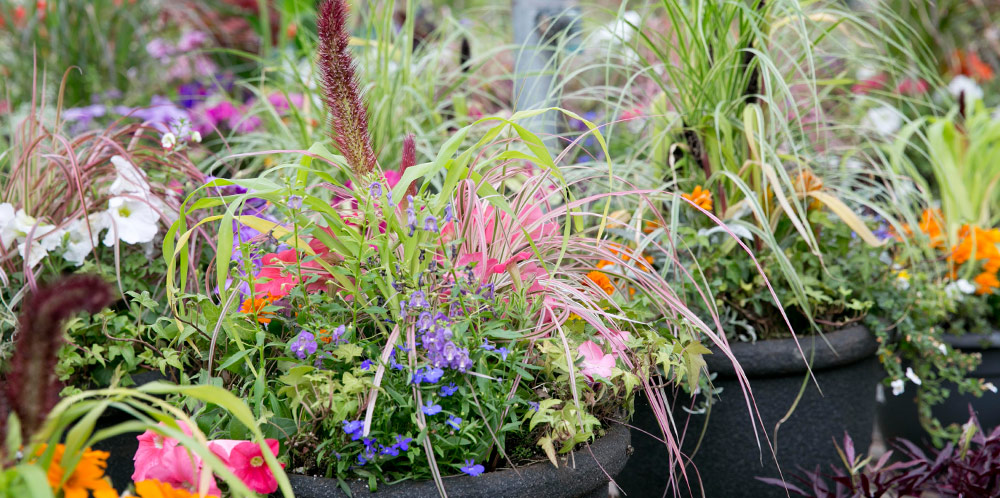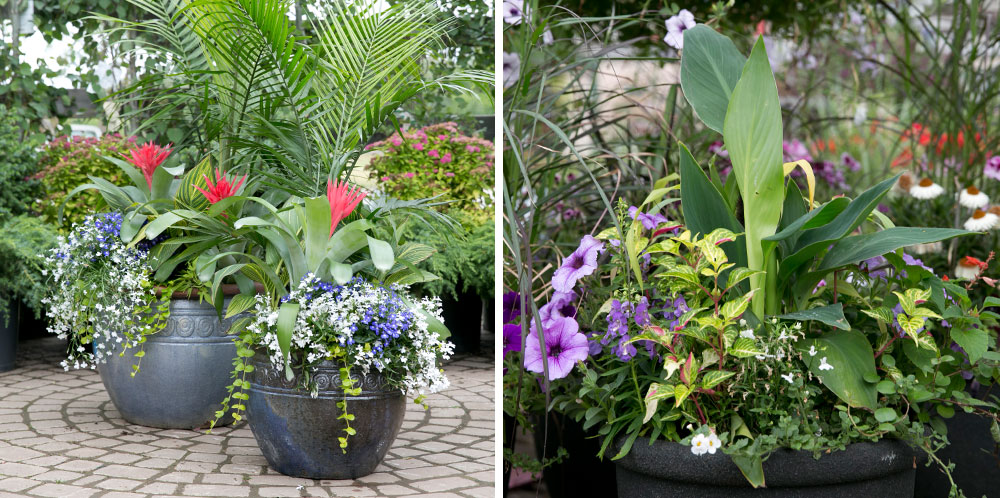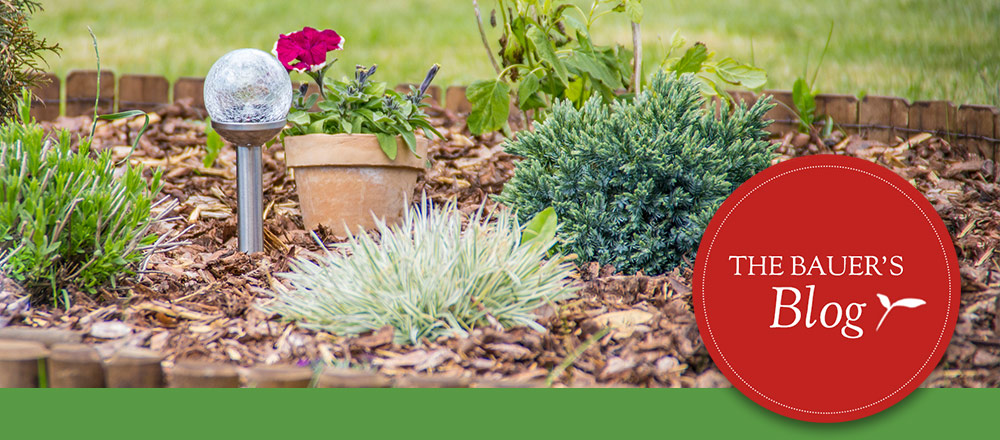“Gardening has always been an art, essentially.”
– Robert Irwin
Container gardening is an art. Not only can anyone do it and be good at it, but each container is its own living sculpture, full of all your favorite plants. Like most art forms, your container garden will look its best when a few guidelines are used to direct your creativity. These tips and guidelines are like hints that will have your container looking great, while still leaving options to explore to suit your taste.
Container gardens make the perfect gardens for people that want to have fun in their garden without too much commitment. Our design advice can help anyone to make a container, no matter how creative they are (or aren’t). The seasonality of containers allow for new looks every year. While landscaping with trees and perennials is more permanent, your containers are the perfect place to have fun each new season.
Here are our tips to help you create the best-looking containers with minimal design trial-and-error:

The Biggest Might Not Be The Best:
The original styles of container gardening called for cramming as many flowers into one pot as you could. While an abundance of color and life still has some appeal, we have much more nuanced ways of achieving it now.
Containers these days stretch creativity and the imagination further than color. Modern containers use more tools to make fun and decorative pieces that can be eye-catching themselves. Beyond the brightest and most colorful flowers, gardeners have fun experimenting with textures, shapes, and scents to make unique and personal containers.

Thrillers, Fillers, Spillers:
With so many beautiful and unique plants to choose from, this core guideline helps to structure your container all while leaving the possibilities open for whatever plants you fall in love with at the Garden Center. Great for beginners and pros, this rule applies to any container, whether you need help to find somewhere to start or already know what you want.
Thriller: This is your centerpiece plant. These provide a focus for your whole container and draw the eye, acting as the main feature. Their shape varies a lot from tall, vertical grasses to busier and large plants. They tend to be taller, larger, and have more dominant features to base your container around. Perennials make an ideal centerpiece, as they flourish in your container during the summer season and are ready to be planted in your yard in the fall.
Filler: These central plants are usually mounding plants that provide the bulk and body of your container. They can be either flowers or foliage! Keep in mind their proportions as you plant, so that your fillers are a good size in comparison to your other plants. You can expect your fillers to do a lot of the heavy lifting as far as flowers are concerned in your container.
Spiller: These trailing plants cascade out of the container and add a sense of additional weight and fullness to your container garden. Some trailing plants have tons of volume and compliment your fillers for space, while others are strictly trailing plants.
If you have a tall container (or one you don’t like much), then long vines are the perfect chance to mask it. On the other hand, with a more stout pot, smaller or no trailers (spillers) at all may be the best choice.
Back to Basics:
Here’s a few more tips to get started:
• You get to choose your container – in both size and appearance. This is a part of your overall design that many forget. Choose a container that suits your tastes, and choose a dimension that will work with the plants you want and your location. An important aspect in choosing your container is to maintain a sense of scale. Generally, the height of your plants should be your container’s height plus a third. For example if your container is 3 feet high, your plants should grow to about 4 feet.
• Plan and plant your container according to where it will be and how you will look at it. If you’re planning to see your container from all sides, place your thriller plant in the middle. You’ll have comparatively less room on the sides for other plants, so you may want to choose a larger container. If you’ll be placing your container against a wall, your thriller can go at the back, giving the illusion of more space. Here, you can get away with a smaller pot or grouping your other plants.
• Check the plant tag to check how big your chosen plants will get as you plan your container, so it will look the way you imagined it all season.n.

Once you’ve combined these elements, you’re ready to start planning the design of your container. These tips are flexible and intended to help you get started designing your best containers year after year. They aren’t rules set in stone – they’re to help you design stunning containers that you love and others admire, time and time again.







Leave A Comment